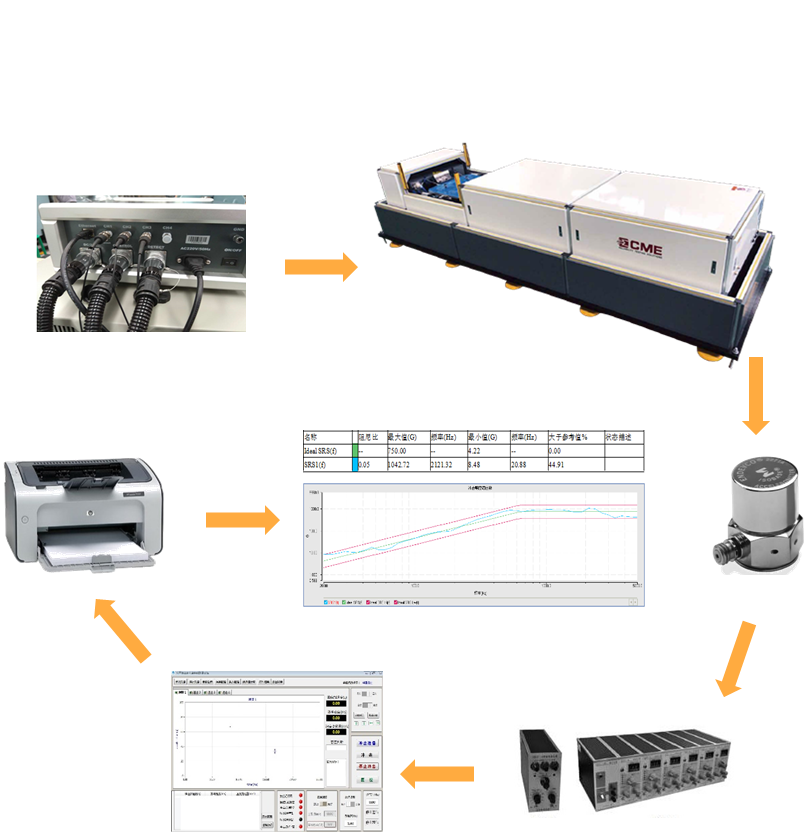What is the shock response spectrum test?
— Part 4 Compare to pendulum SRS tester, why choose pneumatic shock response spectrum test system?
1) The free fall of the pendulum produces limited excitation energy. If a larger shock energy is required, the mass of the pendulum and the radius of the pendulum need to be increased, which not only consumes a large amount of power of the geared motor and clutch, but also takes up a large space, needs special safety protection;
2) For the simulation of higher energy shock response spectrum, the shock energy realization method cannot meet the requirements;
3) Most of the existing pendulum shock response spectrum testing machines use electromagnetic clutches to pull in the pendulum shaft to prevent the pendulum from rebounding again. The clutch is subject to shock loads and is easily damaged and worn;
4) The adjustment of the back seat support cushion of some pendulum shock response spectrum testing machines is very cumbersome, and the manual thread adjustment method has poor consistency and low efficiency.
In order to overcome the shortcomings of the existing technology, CME developed a pneumatic high acceleration level shock response spectrum test system with compact structure, short stroke, large excitation energy, safety and environmental protection, which can overcome the disadvantages of existing pendulum shock response spectrum test machine with small excitation energy, large space occupation, installation and maintenance inconvenience.

1) The shock hammer is driven by pneumatic energy storage, that the driving energy is much greater than the pendulum response spectrum tester
2) An ingenious circulating air storage tank is designed, and the air chamber is automatically switched after each shock action is completed, so that the shock test gas loss is small, and the secondary shock preparation efficiency is greatly improved;
3) Designed advanced pneumatic self-locking mechanism and pneumatic control high-flow quick release valve, which solves the disadvantages of mechanical locking that are easy to wear, out of synchronization and poor reliability;
4) The shock hammer is designed in the form of a basic hammer + counterweight, and the weight of the hammer head can be adjusted by adding weights; also the shock energy under the same driving capacity is expanded to meet the requirements of the shock response spectrum test under heavy load;
5) Adjust the size of the driving shock energy by adjusting the size of the air pressure, which is convenient for operation and high efficiency;
6) The shock hammer head is guided freely, the energy consumption of rolling friction is small, and the response plate is freely shocked after high energy is obtained, no compression, no secondary shock, and good repeatability;
7) The driving cylinder makes the shock hammer head slow down and buffer and automatically reset after it obtains the required energy, and ready for next shock test;
8) A special platform base is designed, the height of the response board is ergonomic, the sample is easy to install, and the front and rear cushions are easy to adjust; in addition, the rigidity of the installation position of the response board and the area of the base are greatly enhanced to make it better Fixed with a special foundation to withstand greater shock loads;
9) The back support of the response board is designed with a pneumatic cushion adjustment device, the stiffness of which can be adjusted within a certain range, which makes it easier to adjust the low frequency slope of the response spectrum;
10) The integrated measurement and control system has the functions of shock response spectrum testing machine control, shock data acquisition, and shock response spectrum analysis. The operation has a good human-computer interaction interface, intuitive and convenient to use, and a high degree of automation.

The pneumatic high acceleration shock response spectrum test system is mainly composed of three parts: a low-pressure air source system (optional), a pneumatic drive mechanical system, and an integrated measurement and control system.










































